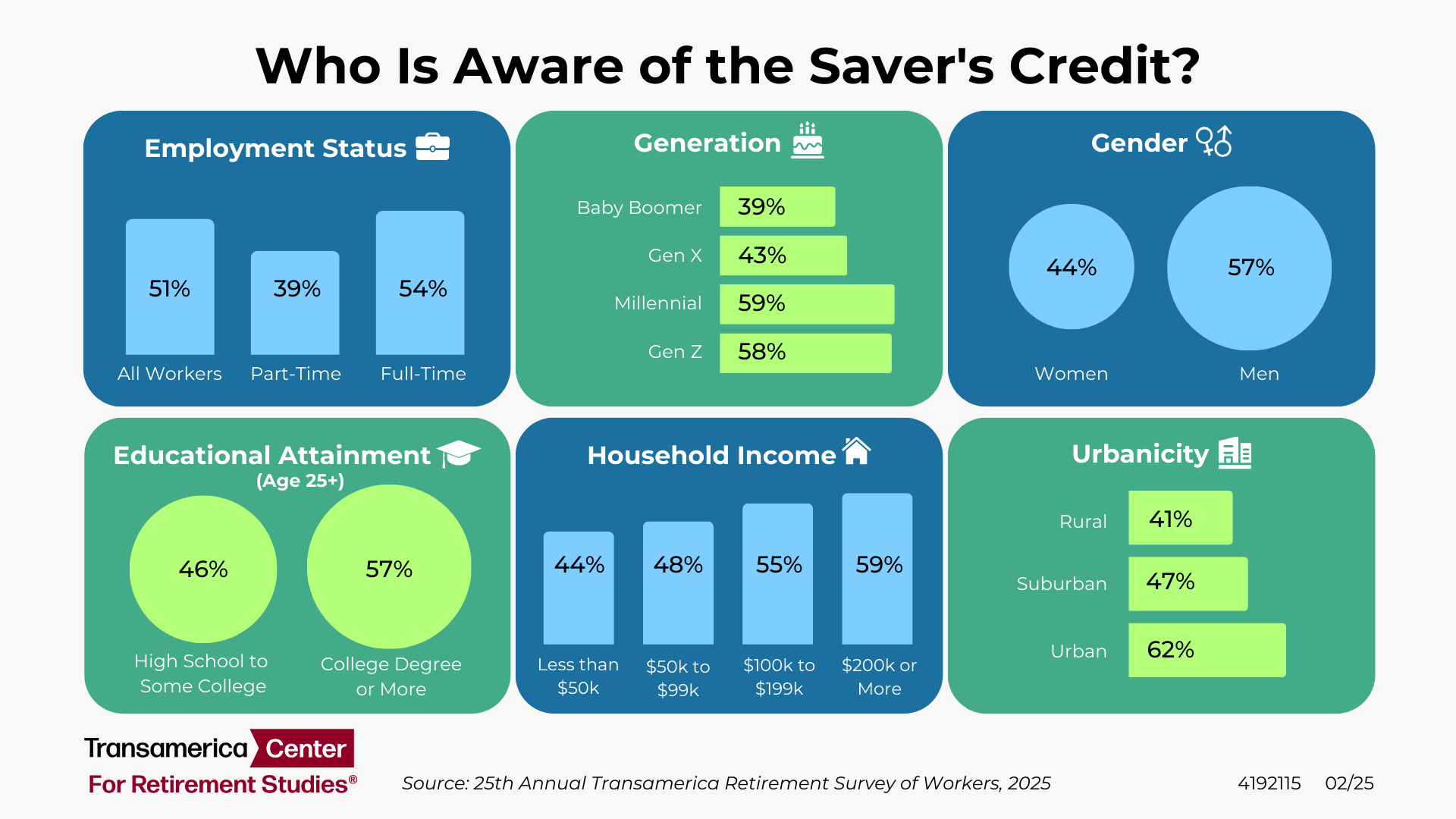Saver's Credit for Retirement Savers

The Saver's Credit, also called the Retirement Savings Contributions Credit, is a little-known IRS tax credit that pays you to save for retirement. Find out if you are eligible to claim it and boost your retirement tax savings.
The Saver's Credit will be available through tax year 2026. It will be replaced by the Saver's Match, a new federal government matching contribution for eligible retirement savers, beginning in 2027.
Select materials are translated into Spanish.
Downloads
What is the Saver's Credit?
The Saver's Credit is a nonrefundable IRS tax credit that may be applied up to the first $2,000 of voluntary contributions that you make to eligible retirement accounts. It is a dollar-for-dollar reduction of your federal income tax liability, and can reduce the amount you owe or increase your refund for taxes already paid. This retirement savings tax credit is in addition to tax deductions and tax-deferred growth on retirement savings — a triple tax benefit.
How to Claim the Saver's Credit?
Step 1
Check Eligibility
You must be age 18 years or older, not a full-time student, not claimed as a dependent on another person's return, and meet the Adjusted Gross Income (AGI) requirements:
Saver's Credit limits for tax year 2024
- Single filers: $38,250
- Head of household: $57,375
- Married filing jointly: $76,500
Saver's Credit limits for tax year 2025
- Single filers: $39,500
- Head of household: $59,250
- Married filing jointly: $79,000
Step 2
Save for Retirement
Types of eligible contributions to tax-advantaged retirement accounts include:
- Traditional or Roth IRA,
- Workplace retirement plans such as a 401(k), SIMPLE IRA, SARSEP, 403(b), 501(c)(18) or governmental 457(b) plan, and
- ABLE account by the designated beneficiary.
- Note: Rollover contributions aren't eligible. Your eligible contributions may be reduced by any recent distributions you received from an employer-sponsored retirement plan, IRA, or ABLE account.
Step 3
Calculate Credit Amount
The amount of the tax credit you can receive is based on your eligible retirement contributions and your "credit rate."
Your credit rate can be as low as 10% or as high as 50%, depending on your income and filing status.
That's a maximum credit of up to $1,000 for single filers or individuals and up to $2,000 for married couples filing jointly.
The average amount of the Saver's Credit was $194 in 2022, according to an analysis of IRS data by TCRS.
Tax Tips for Claiming the Saver's Credit
When preparing your tax return, use the Form 8880, Credit for Qualified Retirement Savings Contributions, to calculate and claim your credit. Then, use the Form 1040, 1040-SR (with Schedule 3), or 1040-NR to file your taxes.
If you're eligible for the Saver's Credit, you may also be eligible for free online tax preparation services. The IRS offers a Free File Program to tax filers with an AGI of $84,000 or less for the 2024 tax year. The online services provide guided tax preparation and electronic filing. Be sure to check whether your selected tax preparation service supports the Form 8880 to claim the Saver's Credit and to learn if any additional fees may apply.
*Note: Beginning in 2027, the SECURE Act of 2022 replaces the Saver's Credit with the Saver's Match, a matching contribution from the government for retirement savers meeting income eligibility requirements. The Saver's Match will be 50% of a worker's retirement plan or IRA contributions up to $2,000, representing a maximum amount of $1,000.
Research Publications




